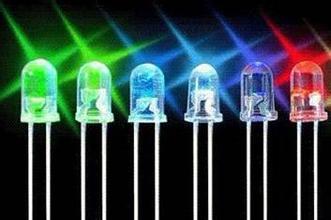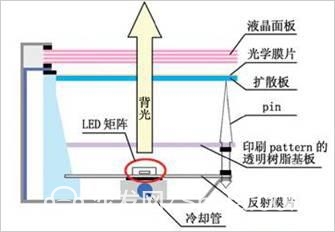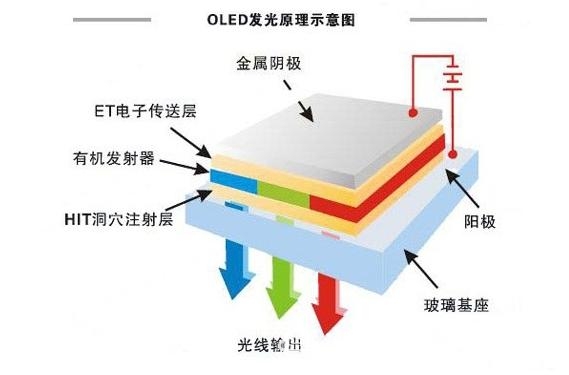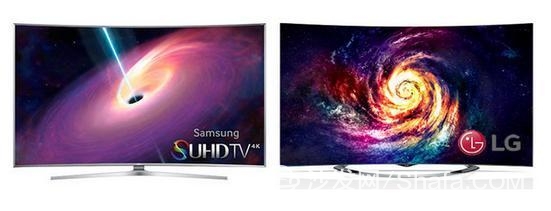Talking about LCD, LED and OLED
LCD is the abbreviation of liquid crystal display Liquid Crystal Display, there are several types of LCD screens such as TFT, UFB, TFD, STN.

LED is the abbreviation of Light Emitting Diode. LED applications can be divided into two categories: First, LED display; Second, LED single-tube applications, including backlight LED, infrared LED and so on.

Because the liquid crystal itself does not emit light, it requires an additional light source to shine. The traditional liquid crystal uses CCFL as the backlight source, namely the compact energy-saving lamp, and because LED has the characteristics such as less power consumption, long service life, low cost, high brightness, less failure, large viewing angle, far away from the visual distance, so later switched to LED as a backlight, so there is a LED TV (essentially LCD LCD screen).

So, what's the difference between LED display and LCD display? as follows:
1. The power consumption ratio of LED to LCD is about 1:10, and LEDs are more energy-efficient.
2. The LED has a higher refresh rate and has better performance in video.
3.LED provides a wide viewing angle of 160 °, can display a variety of text, numbers, color images and animation information, can play TV, video, VCD, DVD and other color video signals.
4. The single element of the LED display has a reaction speed 1000 times that of the LCD screen. It can also be viewed under strong light, and it can adapt to a low temperature of minus 40 degrees.
5. LED backlight: power saving (30%~50% compared to CCFL power saving), high price, high brightness and saturation.
Therefore, using LED technology, you can create thinner, brighter, clearer TVs or displays than LCDs.
Then, let's talk about the difference between LCD (LED/LCD) and OLED.
OLED is the acronym for Organic Light-Emitting Diode. Liquid crystal display (LCD) is a different type of light emitting principle. Organic light-emitting diodes can be classified into single-color, multi-color, and full-color types according to colors. Among them, the preparation of full-color organic light-emitting diodes is the most difficult; depending on the driving mode, it can be classified into a passive type (PMOLED) and an active type (AMOLED). ).

1. Brightness, visibility and energy consumption: OLED features are self-luminous, do not need backlight source, and are composed of LED arrays. Therefore, the visibility and brightness are high, and the voltage requirement is low and the power saving efficiency is high.
2. Contrast: OLED can produce better contrast without any blooming.
3. Resolution: The active driving of the OLED has no duty cycle problem, the driving is not limited by the number of scanning electrodes, and it is easy to realize high brightness and high resolution. Active driving can realize gradation adjustment for brightness red and blue pixels independently, which is more conducive to OLED colorization.
4. Refresh rate: OLED has a very high response speed, so it has a higher refresh rate and motion blur than the LCD screen.
5. Image quality: LCD TVs, whether they are response time, high dynamic range (HDR), color gamut expansion and other technical indicators can not be compared with OLED TV. LCD and OLED TVs are not a technology-grade product. LCD screen in front of OLED comparison, LCD is a haze.
6. Lifetime: At present, the lifespan of OLEDs is not as good as that of liquid crystals.
7. Price: The yield of OLEDs on large-size panels is only 15%, and the low yield rate has also contributed to the high price of OLED TVs. At present, LCD TVs are much cheaper than OLED TVs, and the cost difference may be as high as 5 times. However, OLED TVs are becoming cheaper and cheaper, which is worth noting.
8. The new technology of OLEDs is the Flexible Organic Light Emitting Display Technology (FOLED), which is likely to make highly portable, foldable display technology possible in the future.
Based on these advantages of self-luminescence, wide viewing angle, high contrast ratio, low power consumption, and extremely high reaction speed, OLED is regarded as one of the most promising products in the 21st century. However, at present, technical problems in terms of price (larger display panel), lifespan, etc. still need to be overcome. The global OLED industry is still in the initial stage of industrialization. The global enterprise products involved in the OLED industry are mainly small-size passive OLED devices used in mobile phones (such as ultra-thin mobile phones), digital video cameras, DVD players, personal digital assistants (PDAs), and notebook computers. , car audio and television.
However, only a few companies have achieved mass production of active OLED devices that pose a real threat to LCD (liquid crystal). Currently, OLED panel manufacturers are mainly concentrated in Japan, South Korea (Samsung, LG), and China Taiwan. In January 2013, LG Electronics released the LG curved OLED TV at the CES for the first time in the world, which indicates that the world has entered the era of large-size OLEDs. On September 13th, LG Electronics held a new television conference in Beijing to launch China’s first LG curved OLED TV, the LG55EA9800-CA, marking the official arrival of China’s OLED TV era.

Also, Apple's long-term procurement of OLED screens from Samsung may prepare its next-generation iPhone. According to rumors, Apple will launch a high-end mobile phone with an OLED screen in 2017. Of course, there are rumors that it will be released in 2018 or even 2019. Apple currently uses OLED screens on the smart watch Apple Watch and on the latest laptop MacBook Pro.
Finally, with the development of VR/AR technology, compared with LCD and LCOS, OLED has great advantages in the application of head-mounted display: bright and vivid full-color display, ultra-low power consumption, etc., is a head-mounted display A major driving force for development. The trend of these indications indicates that in the future OLEDs will become more and more widely used as their technologies become more mature.
Cummins Diesel Generator assembly by Cummins diesel engine, alternator, radiator, controller, base frame;
. World Famous diesel engine brand: Cummins,
. World famous AC alternator brand: Stamford, Leroy Somer, Mecc Alte, Marathon, Faraday, SWT
. World famous genset controller brand: Deepsea, ComAp, Deif, SmartGen,
. Good Quality Cooling Radiator
. Start Battery system
Cummins Engine,Cummins Generator Set,Cummins Power Generator,Cummins Diesel Generator
Guangdong Superwatt Power Equipment Co., Ltd , https://www.swtgenset.com
